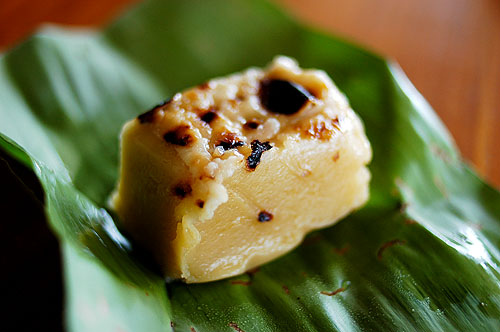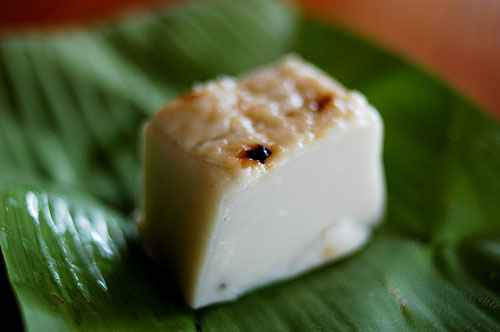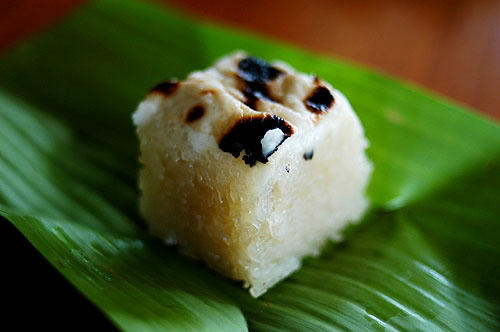 As mentioned previously, Mae Hong Son was pretty wet, so we spent a lot of our time indoors, much of it eating and drinking. Of all the things we consumed there, I'm pretty sure that the local sweets were the biggest hit among the two chefs. We bought several banana leaf packages of the sweets on a daily basis, and they never seemed to tire of them.
As mentioned previously, Mae Hong Son was pretty wet, so we spent a lot of our time indoors, much of it eating and drinking. Of all the things we consumed there, I'm pretty sure that the local sweets were the biggest hit among the two chefs. We bought several banana leaf packages of the sweets on a daily basis, and they never seemed to tire of them.
Our sole khanom purveyor was Pa Ni, a native of Mae Hong Son who was taught by her mother to make Shan/Thai Yai-style sweets over forty years ago. My personal fave of her repertoire is something called peng mong:

According to Pa Ni, this one is made using what she calls paeng mi, "noodle flour" (I suspect this simply wheat flour), and has the consistency of a Western-style cake, with a salty/sweet coconut topping acting as the frosting. Because of the crumb-like consistency of the sweet, Chef Andy reckons some sort of leavening agent is used here, a rarity in Thai sweets.
My second favourite has to be alawa jun:

a significantly heavier sweet made from rice flour, ample coconut cream and a slight hint of durian (Pa Ni adds thurian kuan, durian paste, to this sweet). Like all of Pa Ni's sweets, the top is slightly singed, the result of a "baking" process where, after steaming the sweets, she covers the trays and tops this with a layer of hot coals.
The regular alawa:

is slightly lighter and gets most of its flavour from sugar and coconut milk.
And Suay thamin:

is the Shan pronunciation of the Burmese shwe thamin, "golden rice", and is rather heavy sweet made from sticky rice.
For an earlier post on Thai Yai sweets, go here.
Pa Ni 9 Thanon Singhanat Bamrung, Mae Hong Son
View Thai Eats in a larger map











